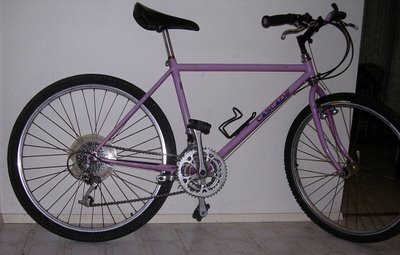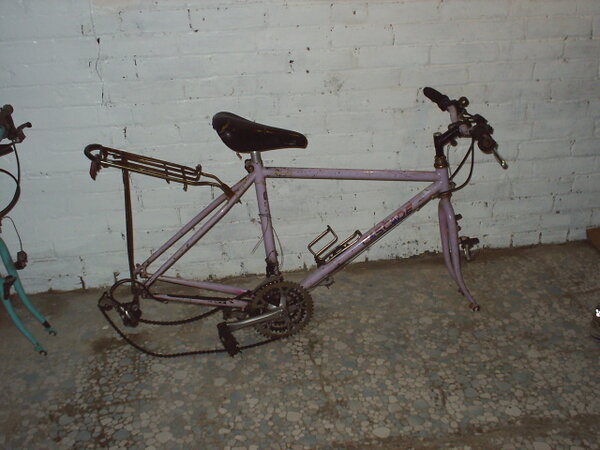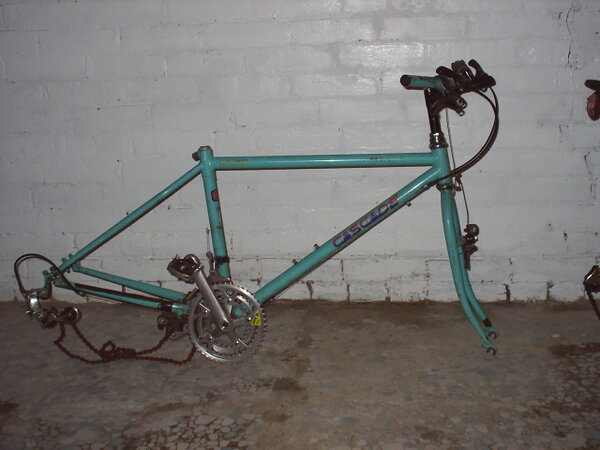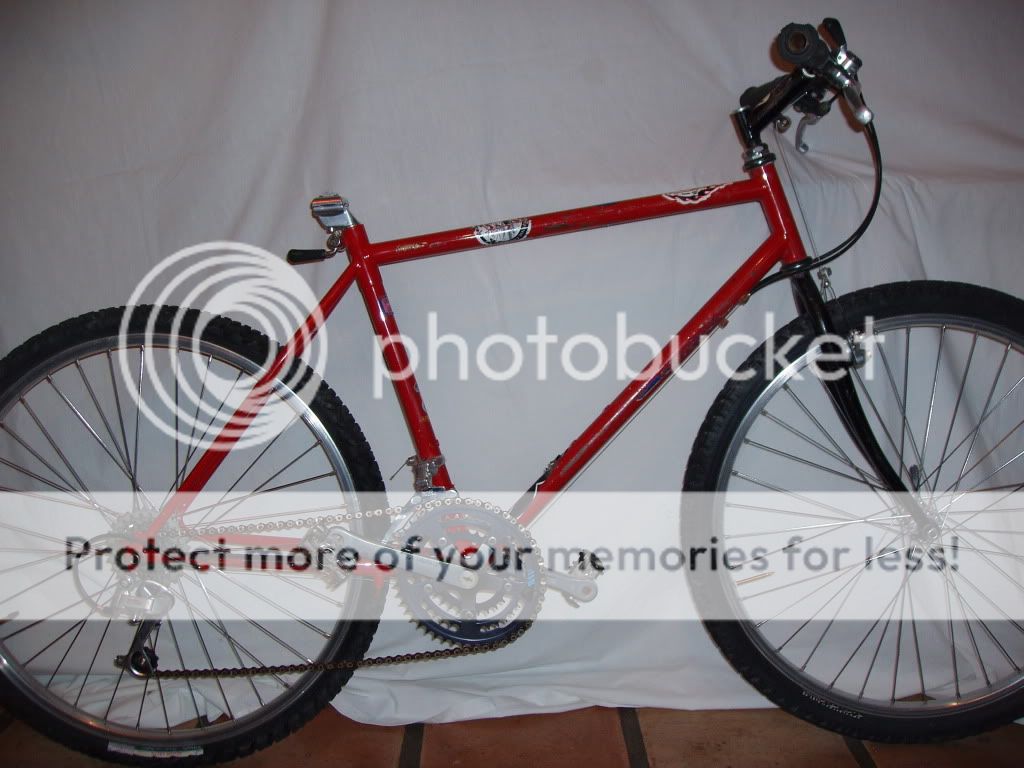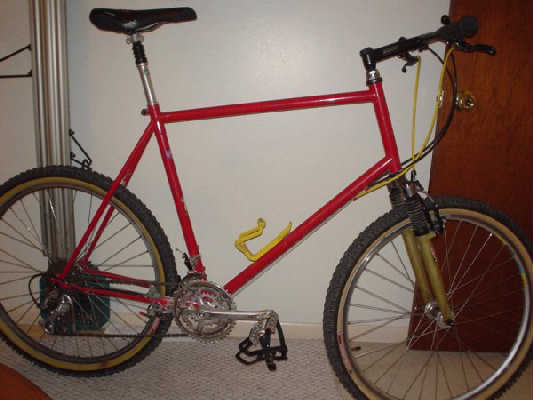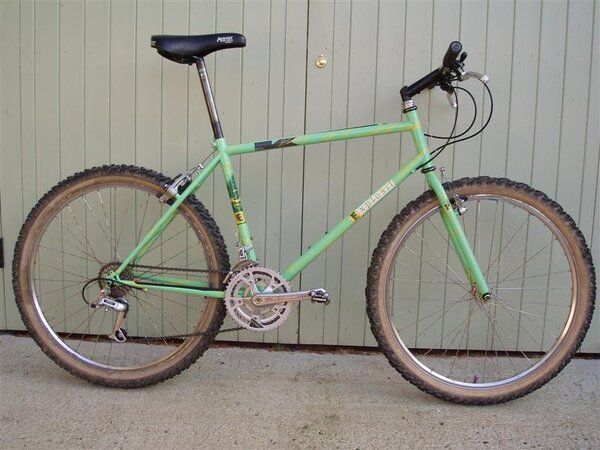GT BIKE RIDER
Retro Guru
Found this small bit of info.
Thursday, February 26, 2009
My dad picked up a few bikes in his travels. One of them is a beat-up BRC, which has been through the recycler shop at least once - a good example of the state of the art in the early 90s, with U-brakes and flashy brand names (Exage! Hyper-drive!) but nothing really special.
The other bike IS something special - a pre-Kona era Kona. It's a Cascade Fire Mountain, designed by Joe Murray, made in Taiwan - with some cromoly tubes and bottom-of-the-barrel components.
Thursday, February 26, 2009
My dad picked up a few bikes in his travels. One of them is a beat-up BRC, which has been through the recycler shop at least once - a good example of the state of the art in the early 90s, with U-brakes and flashy brand names (Exage! Hyper-drive!) but nothing really special.
The other bike IS something special - a pre-Kona era Kona. It's a Cascade Fire Mountain, designed by Joe Murray, made in Taiwan - with some cromoly tubes and bottom-of-the-barrel components.
